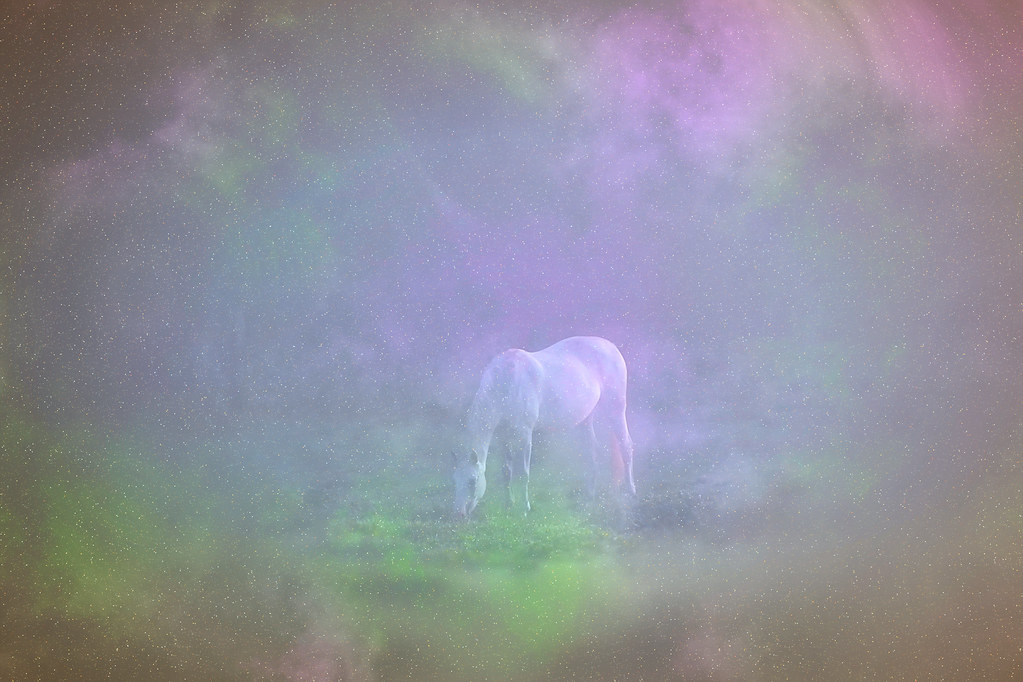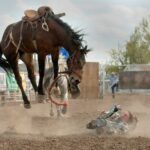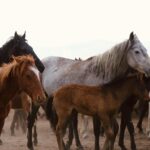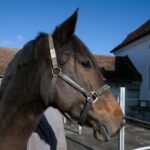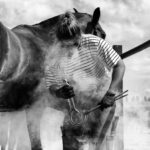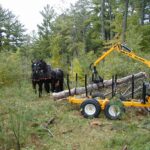Throughout human history, horses have galloped alongside us as companions, workers, and symbols of strength and freedom. Beyond their practical roles, they have become deeply embedded in our mythology and folklore. Across various cultures and eras, mysterious legends about these majestic creatures have emerged—tales that defy conventional explanation and continue to captivate our imagination. From ghostly equines haunting remote landscapes to magical horses with supernatural abilities, these stories blur the line between reality and fantasy. In this exploration of the world’s most enigmatic horse legends, we’ll delve into narratives passed down through generations, remaining unexplained by modern science or historical investigation. These accounts continue to mystify equestrians, folklorists, and supernatural enthusiasts alike, reminding us that some mysteries are meant to remain unsolved.
The Nightmare Steeds of European Folklore
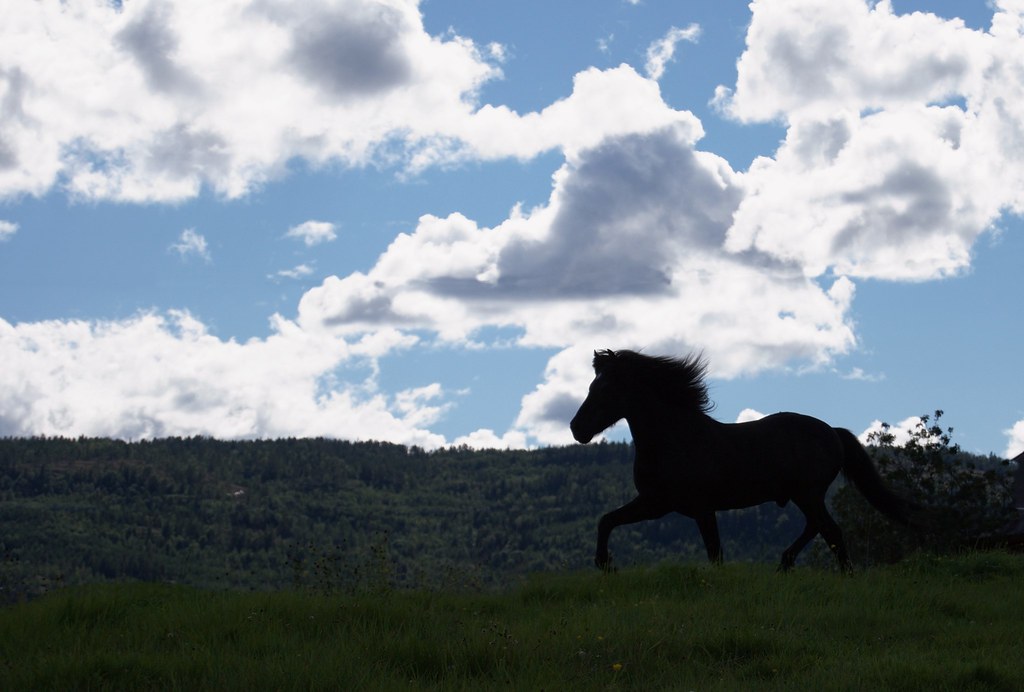
One of the most enduring equine legends in Europe centers on nightmare steeds—phantom horses believed to bring terrifying dreams and nightly hauntings to their victims. The word nightmare itself stems from the Old English mare, a malevolent female spirit said to sit on a sleeper’s chest, causing suffocation and disturbing visions. These spectral horses were often described as jet black, with eyes that glowed like embers, appearing and vanishing without warning. Medieval accounts tell of people waking to find hoofprints around their homes or feeling inexplicably drained, as if they’d been ridden through the night by these supernatural beings. While modern sleep science attributes such phenomena to sleep paralysis—often marked by pressure on the chest and vivid hallucinations—many still believe this explanation fails to account for the strikingly similar experiences reported by isolated communities across Europe.
The Mari Lwyd: Wales’ Haunting Horse Skull Ritual
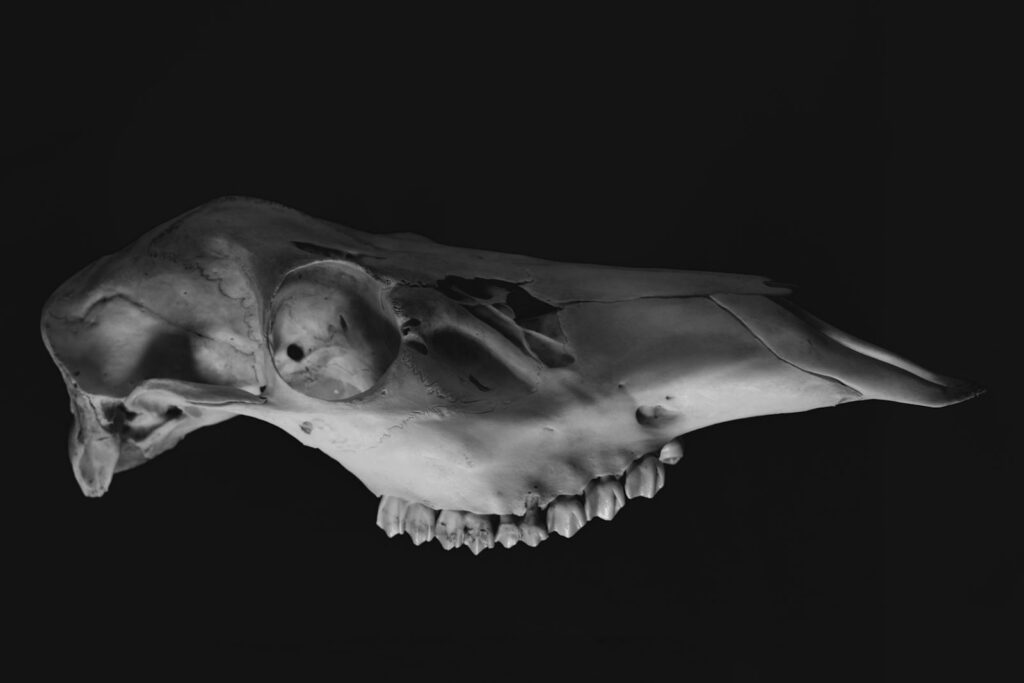
Among the most eerie and enduring equine traditions is the Mari Lwyd (Grey Mare) of Welsh folklore, a custom involving a horse’s skull mounted on a pole, decorated with ribbons and bells, and carried door-to-door during winter celebrations. The ritual involves the skull-bearer and companions singing and engaging in verbal contests (pwnco) with homeowners, ultimately gaining entry to bring good luck. What remains mysterious is the ritual’s true origin, with some scholars tracing it to pre-Christian fertility rites, while others connect it to Indo-European horse worship or even the Celtic goddess Rhiannon. Despite centuries of documented practice, the Mari Lwyd’s precise meaning and purpose remain contested, with some communities reporting unexplained phenomena during the rituals—including horses in nearby stables becoming agitated when the Mari Lwyd approaches and instances where the decorated skull seems to move of its own accord. The ritual’s persistence, despite Christianity’s attempts to suppress it, speaks to a deep-rooted connection between Welsh culture and this haunting equine figure that transcends rational explanation.
The Shape-Shifting Kelpies of Scottish Waters
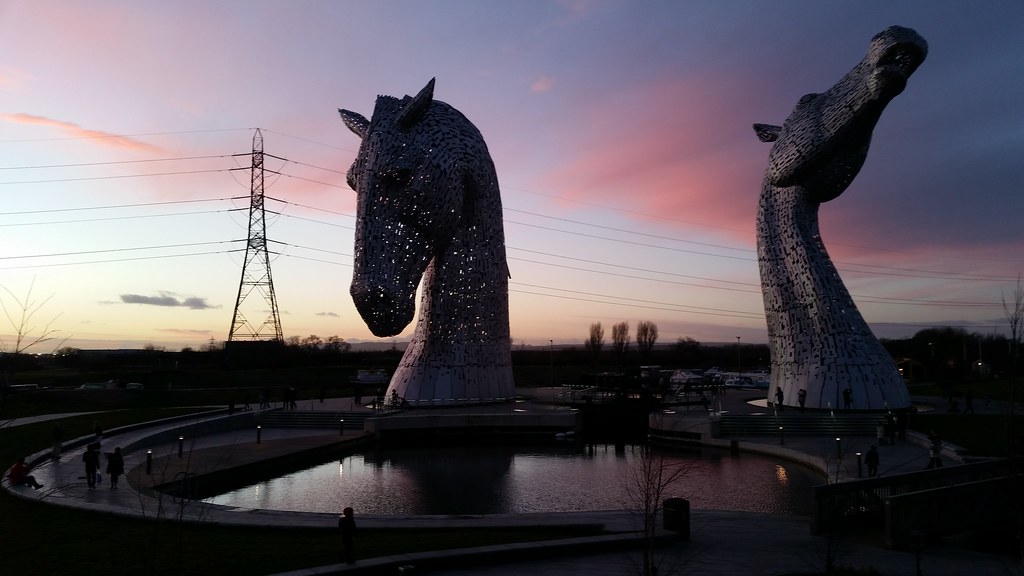
Scotland’s lakes and rivers are said to be home to kelpies, malevolent water spirits that most commonly appear as beautiful, strong horses waiting patiently by the water’s edge. These creatures possess magical adhesive skin—anyone who touches a kelpie becomes stuck fast and is then dragged underwater to meet their doom, with the kelpie devouring all but the victim’s heart and liver. What makes kelpies particularly mysterious is their reported ability to shape-shift, sometimes appearing as attractive humans or hybrid creatures, though they always retain some equine feature (like hooves) that betrays their true nature. Throughout the Scottish Highlands, there are numerous accounts from the 18th and 19th centuries of suspicious horse sightings near bodies of water where drownings later occurred, with some documents even describing “water horse” hoof prints that lead into lochs but never emerge. Modern skeptics suggest these legends arose as cautionary tales to keep children away from dangerous waters, yet the specificity of kelpie descriptions and consistent eyewitness accounts across isolated Scottish communities continue to perplex folklorists and supernatural researchers alike.
The Pale Horse of Death in Global Mythology
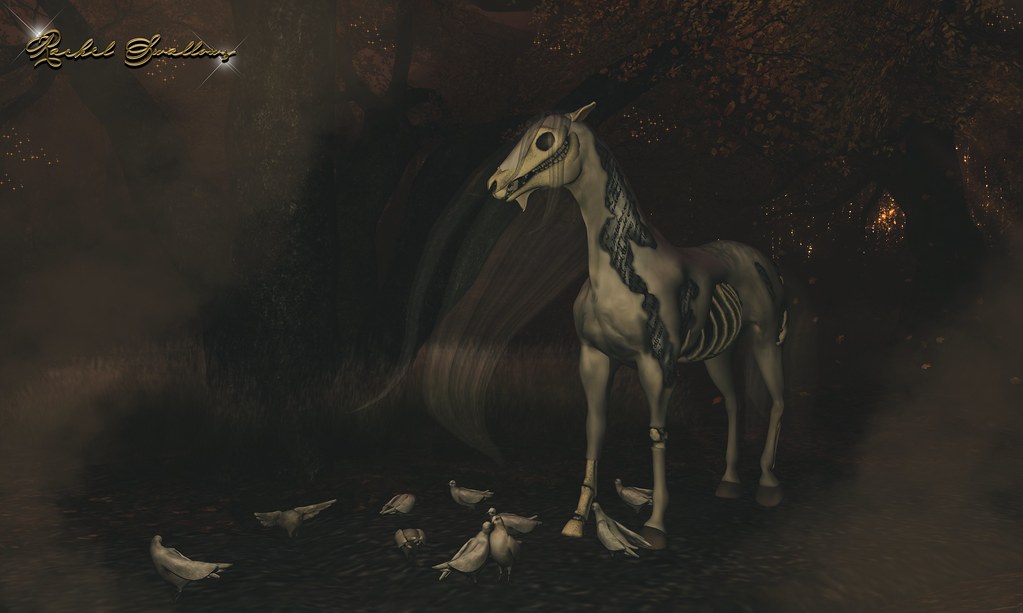
Across disparate cultures, from the Bible’s Book of Revelation to Norse mythology, a pale or white horse frequently appears as the harbinger of death and apocalypse. In Revelation, Death rides upon a pale horse, while in Norse tales, Odin’s eight-legged steed, Sleipnir, carries souls to the underworld. What confounds researchers is the cross-cultural consistency of this symbolism, despite minimal historical contact between some of these civilizations. Psychologists like Carl Jung proposed the concept of the collective unconscious to explain such shared symbolic archetypes, yet this theoretical framework doesn’t fully account for the specific details that appear in these legends. Even more mysterious are the persistent reports throughout history of pale horse sightings before mass casualty events—from medieval plague outbreaks to modern warfare—with witnesses describing eerily similar ghostly equines, despite having no prior knowledge of the symbolism. Historical documents from the Black Death era contain multiple references to “death’s horse” being spotted days before the plague reached certain villages, creating an enduring association that transcends cultural boundaries and continues to evoke profound unease.
The Enigmatic White Horse of Uffington
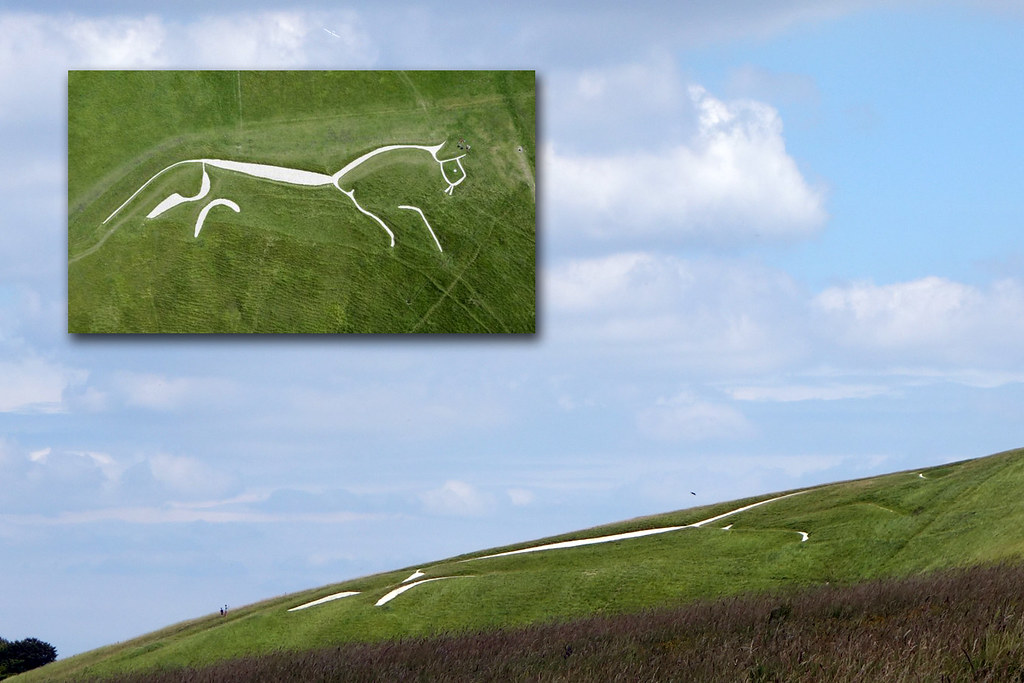
Cut into the chalk hills of Oxfordshire, England, the prehistoric White Horse of Uffington stretches 360 feet long and has perplexed archaeologists and historians since its scientific study began. Created around 1000 BCE during the late Bronze Age, the stylized horse figure requires regular maintenance to remain visible, suggesting an extraordinary commitment by generations of people to preserve it. The true purpose behind this monumental earth artwork remains elusive, with theories ranging from tribal symbols to religious offerings to ancient astronomical markers. What adds to its mystery is the horse’s unique abstract design, unlike other chalk figures from the same period, and its placement where it can only be fully viewed from the air—a perspective ancient creators would never have seen. Local legends claim the horse “moves” of its own accord, with some maintenance workers reporting that measurements taken of the figure never match previous records, as if the horse slowly shifts position over time. Despite modern archaeological techniques, the White Horse continues to guard its secrets, standing as a testament to our ancestors’ unexplained devotion to equine symbolism.
The Vanishing Horses of Devil’s Tramping Ground
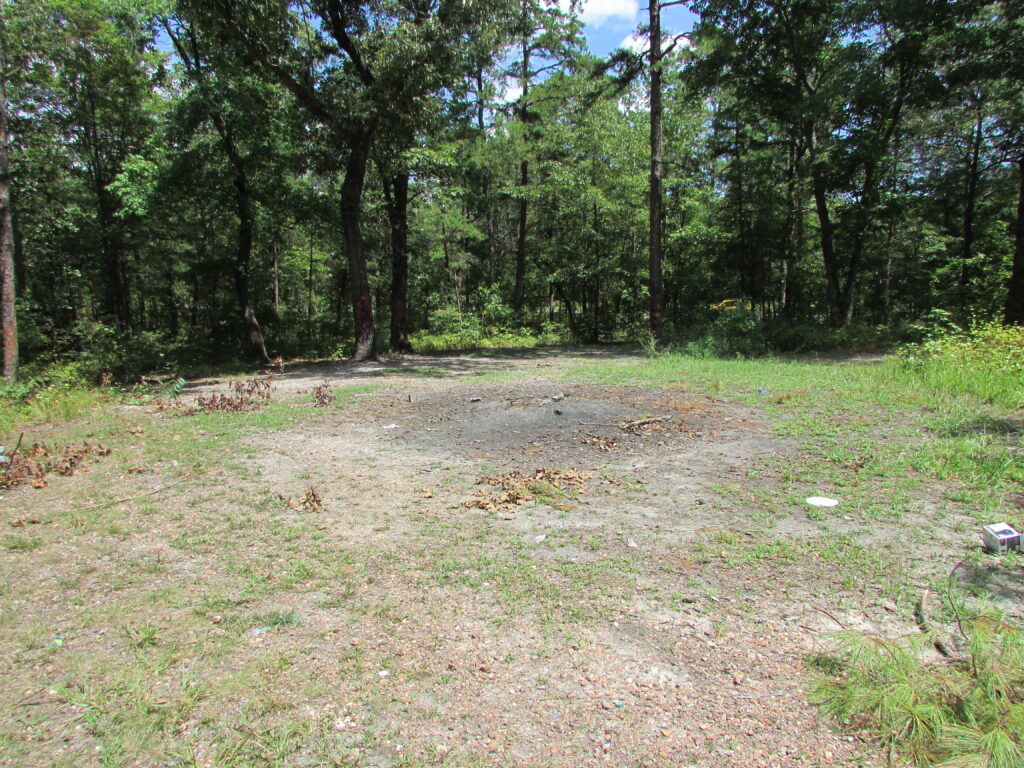
In Chatham County, North Carolina, lies a perfectly circular barren patch of land approximately 40 feet in diameter known as the Devil’s Tramping Ground, where nothing has grown for as long as local records exist. According to legends dating back to the early 1800s, this is where the Devil paces in circles each night, planning his evil deeds, and any object left in the circle by day will be found flung outside its boundary by morning. Perhaps most intriguing are the accounts of horses that supposedly refuse to cross the circle, becoming agitated and uncontrollable when brought near it. Multiple horse owners have documented their animals’ inexplicable behavior near the site, describing how normally calm horses rear, whinny, and display extreme distress that dissipates immediately upon moving away from the circle. Scientific investigations have analyzed the soil, finding elevated levels of salt and other unusual compounds, but nothing that definitively explains both the barrenness and the peculiar animal behavior. Despite rational attempts to explain the phenomenon—from natural gas leaks to indigenous burial grounds—no single theory adequately accounts for the consistent historical reports of equine sensitivity to whatever strange energy permeates this mysterious location.
The Immortal White Horses of Camargue
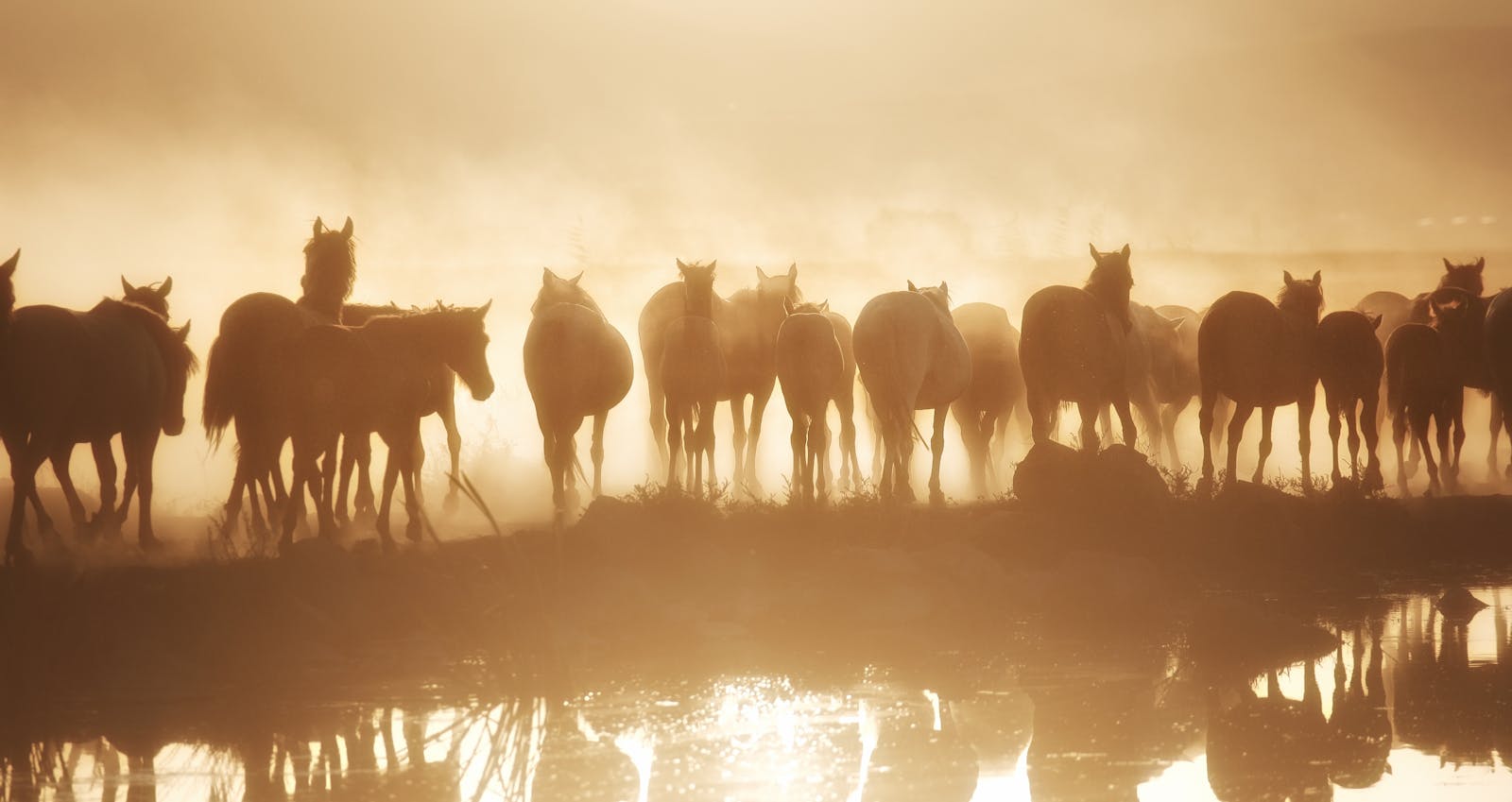
The semi-wild white horses of the Camargue region in southern France have inspired legends of immortality and supernatural origins that persist to this day. These distinctive horses, actually born dark and gradually turning white with age, have inhabited the marshlands between the Mediterranean Sea and the Rhône River delta for thousands of years with an unclear lineage that has confounded equine geneticists. Local folklore claims these horses are immortal, with the same souls being reborn generation after generation, explaining their uncanny adaptation to the harsh wetland environment and their almost telepathic bond with traditional Camargue guardians (cowboys). What gives this legend credence among even skeptics is the breed’s remarkable genetic stability despite minimal human intervention, maintaining consistent physical characteristics that ancient Roman records describe in nearly identical terms to modern observations. More mysteriously, during World War II, occupying forces attempted to capture and relocate the herds, yet documentation from that period describes instances where entire groups of horses seemingly “vanished” into the marshes, only to reappear after danger had passed—behavior so unusual that some biologists have studied whether the horses possess extraordinary environmental awareness or communication abilities that science has yet to fully understand.
The Ghost Horses of Gettysburg Battlefield
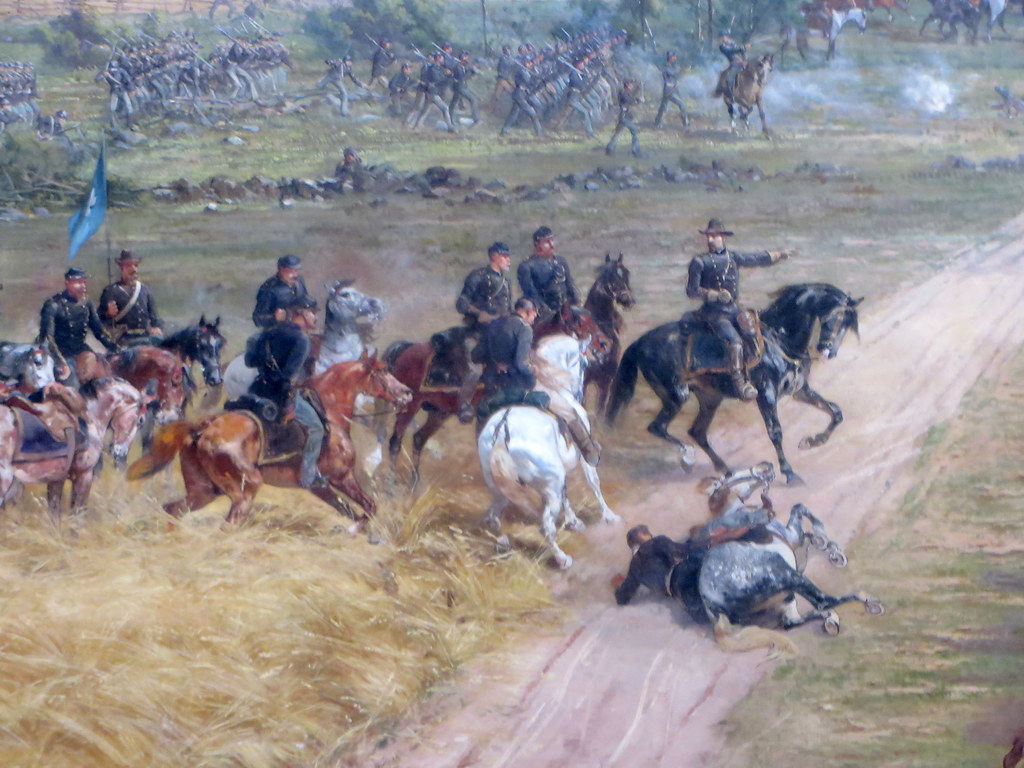
The bloodiest battle of the American Civil War saw approximately 1,500 horses and mules killed at Gettysburg, and accounts of equine apparitions on the Pennsylvania battlefield have persisted for over 150 years. Park rangers, visitors, and paranormal investigators regularly report hearing phantom hoofbeats, disembodied whinnying, and witnessing spectral horses—some riderless, others carrying ghostly soldiers—particularly around Little Round Top and the site of Pickett’s Charge. What makes these accounts particularly compelling is their consistency and the number of independent witnesses with no prior knowledge of others’ experiences, who describe nearly identical phenomena. Even more intriguing are the numerous photographs capturing inexplicable mist formations that appear to take equine shapes, particularly during anniversary reenactments or on dates corresponding to the original battle. Skeptics attribute these experiences to the power of suggestion and environmental factors like fog or unusual acoustics in the battlefield landscape, yet they struggle to explain incidents where horses brought to the battlefield for tours or ceremonies react violently to seemingly empty areas where ghostly equine sightings are most frequently reported. These modern horses’ behavior, becoming agitated and refusing to proceed through certain sections of the battlefield, mirrors historical accounts dating back to the 1870s when cavalry units training near the site experienced similar unexplained reactions from their mounts.
The Miracle Horses of Shackleford Banks
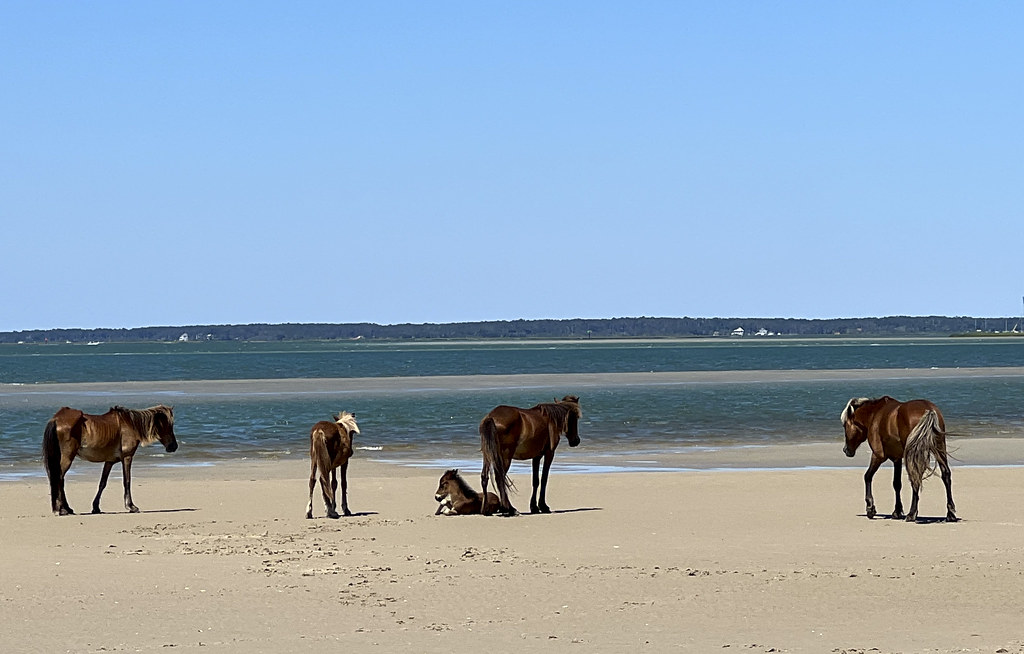
Off the coast of North Carolina, the wild horses of Shackleford Banks have survived for centuries despite the hurricane-prone barrier islands that offer limited food, no fresh water sources, and harsh conditions that would kill domesticated horses. According to legend, these horses descended from Spanish shipwreck survivors, possibly from failed colonization attempts in the 16th century, though no definitive historical record confirms this origin. What confounds scientists is how these horses adapted to drink brackish water that would cause fatal colic in normal horses and developed specialized digestive systems to process marsh grasses containing high salt content. Even more mysteriously, the herd has maintained genetic diversity despite their isolation and small population, defying the usual expectations of inbreeding depression that should have led to their extinction centuries ago. Local fishermen have passed down stories of horses “appearing and disappearing” during major hurricanes, with entire herds seeming to vanish before storms, only to return unharmed afterward, despite having no obvious high ground for shelter on the tiny island. While modern wildlife biologists have documented some of their survival adaptations, they acknowledge that the horses’ continued existence represents an evolutionary anomaly that challenges conventional understanding of equine physiology and behavior in ways that border on the miraculous.
The Mythical Horses of Native American Vision Quests
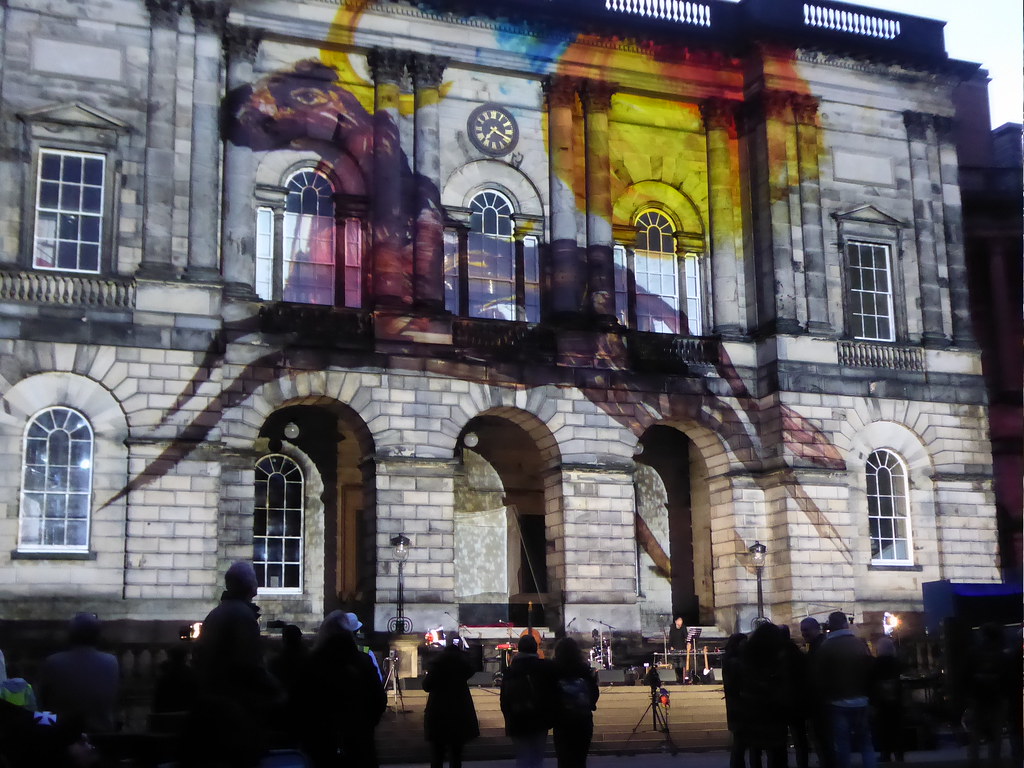
Across numerous Native American tribes, sacred horses figure prominently in vision quest experiences and shamanic journeys, with remarkably consistent descriptions despite these events occurring in isolation. The Lakota, Blackfoot, Comanche, and other Plains tribes have oral traditions describing spirit horses that serve as messengers between worlds, appearing to vision seekers as guides to the supernatural realm. What perplexes anthropologists is how tribes with minimal contact shared nearly identical descriptions of these spectral horses’ appearances and behaviors—typically described as having shimmering coats that change color with movement, manes that resemble fire or lightning, and the ability to fly or run between worlds. Even more compelling are the documented cases where multiple individuals reported encountering the same spirit horse during separate vision quests, describing identical markings or characteristics without prior communication. Modern researchers studying the ethnobotany of vision quest ceremonies note that while some hallucinations might be attributed to ceremonial plants or fasting, the cross-cultural consistency of these equine apparitions and their appearance even in ceremonies without psychoactive substances suggests a phenomenon that transcends simple psychological explanation. Indigenous elders maintain that these spirit horses represent actual entities that exist in a parallel reality, accessible only through specific spiritual practices that modern science lacks the framework to properly investigate or explain.
The Curse of the Night Mare’s Braid
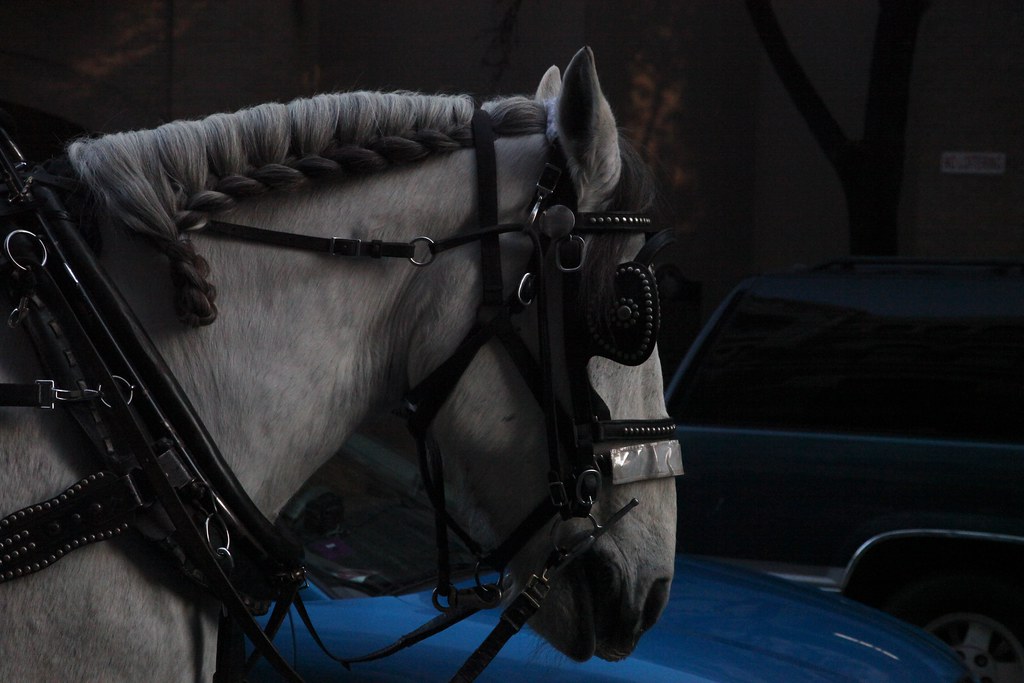
Across Europe, from the British Isles to Romania, horse owners for centuries have discovered intricate braids mysteriously woven into their horses’ manes overnight—a phenomenon that continues to be reported in modern times. These complex plaits, often featuring unusual knotting patterns that would be difficult for humans to create without disturbing a sleeping horse, are associated in folklore with visits from supernatural entities like fairies, elves, or witches who “ride” the horses at night. Horse owners frequently report that their animals appear exhausted the morning after these braids appear, despite being securely stabled, and some claim to find unusual residue or foreign plant materials woven into the braids that don’t grow locally. Scientific investigations have attempted to explain the phenomenon through natural causes like static electricity, the horses self-rubbing against stable fixtures, or human pranksters, yet these explanations fail to account for the intricate patterns, the lack of surveillance evidence despite modern security cameras, and the global consistency of reports spanning centuries. Particularly baffling are cases where multiple horses in different locations experience identical braiding on the same night, with matching patterns documented in stables miles apart with no connection between owners, suggesting a phenomenon that defies conventional explanation and continues to mystify both folklorists and equine experts.
The Inexplicable Horse Mutilations
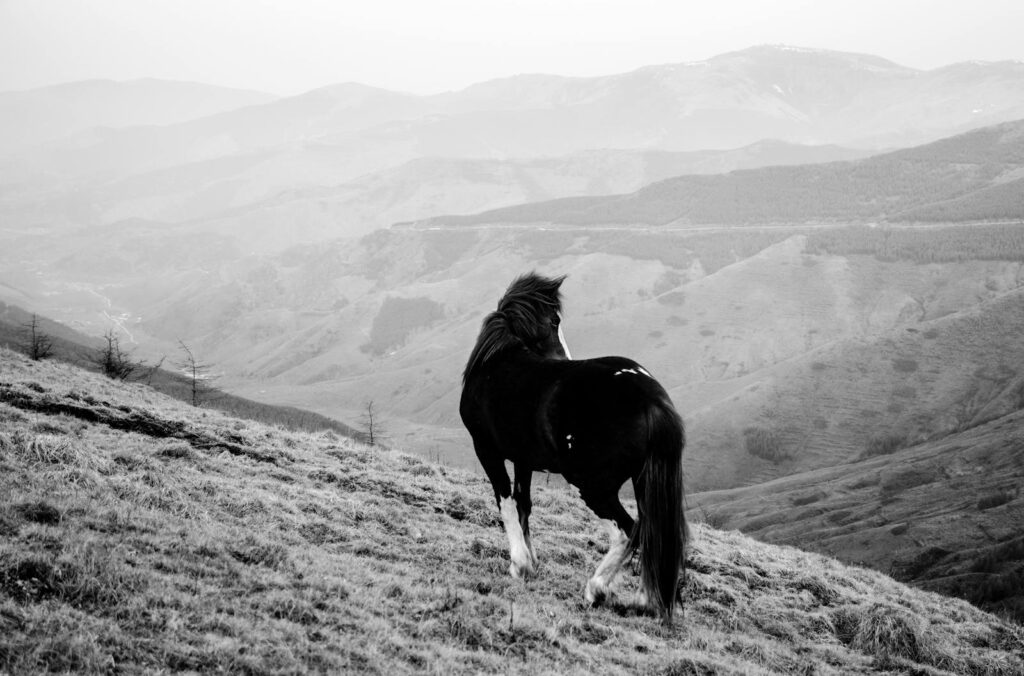
Since at least the 1970s, horse owners around the world have discovered their animals dead under bizarre and unexplained circumstances, with precision surgical-type wounds, missing organs, and strange patterns of exsanguination that defy conventional explanations of predator attacks. These horse mutilation cases share striking similarities—clean, circular incisions; removal of eyes, reproductive organs, and sometimes the tongue; a complete lack of blood at the scene despite major wounds; and no signs of struggle or tracks around the body. Law enforcement investigations have yielded few explanations, with some agencies attributing the mutilations to cult activity, while others suggest natural decomposition processes or predator feeding that only appears unusual. What makes these cases particularly mysterious is their global distribution and the forensic inconsistencies, including tissue cutting that veterinary pathologists have stated would require surgical precision and specialized tools, yet occurring in remote pastures with no evidence of human presence. Perhaps most disturbing are the temporal clusters of these events, with multiple unrelated horses found mutilated in similar ways across different countries within the same time period, suggesting a coordinated phenomenon rather than isolated incidents. Despite decades of investigation, surveillance attempts, and scientific analysis, horse mutilations remain one of the most disturbing and unexplained phenomena affecting these animals, with new cases continuing to emerge that match the same perplexing pattern established in historical reports.
The Earth-Walking Sky Horses of Mongolia
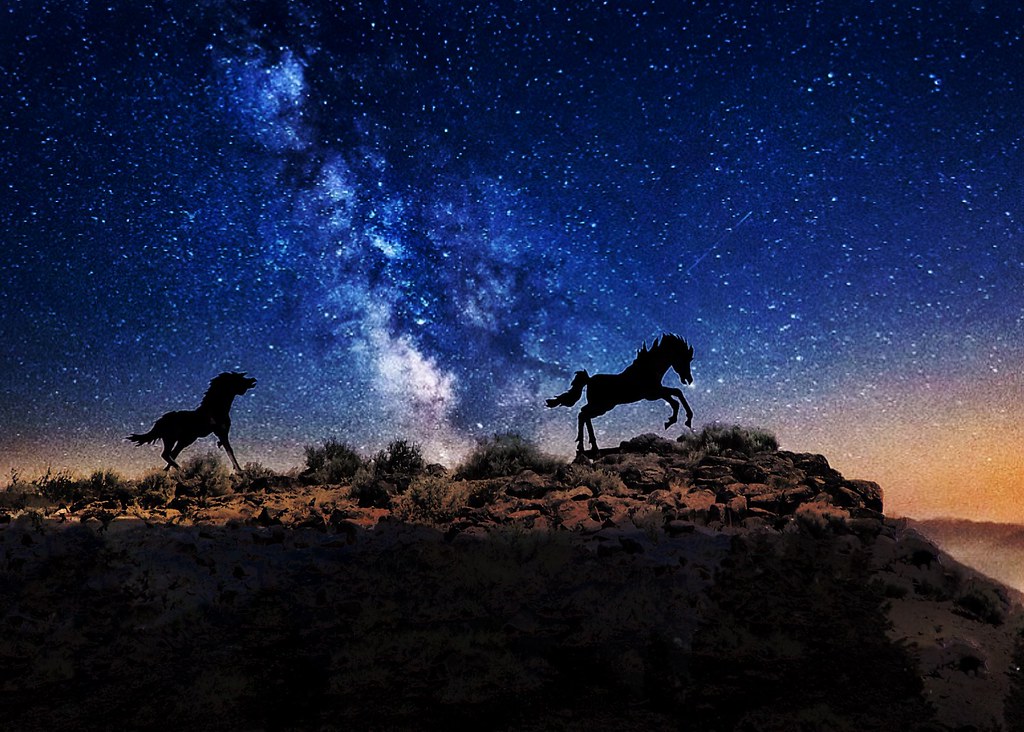
In the vast steppes of Mongolia, where horses remain central to traditional life, shamanic traditions speak of special horses believed to walk between the earthly and spirit realms. These distinctive animals, identified by unusual birthmarks or behaviors, are said to be incarnations of heavenly horses that once flew through the skies but now serve as intermediaries between humans and the divine. What makes these accounts particularly intriguing is the detailed documentation by anthropologists of specific horses within nomadic herds that are unanimously recognized by unrelated communities as possessing these supernatural qualities, with consistent descriptions of their unusual behaviors—like appearing to communicate with unseen entities or predicting weather phenomena with uncanny accuracy. Modern researchers have noted that these designated “sky horses” often display statistically anomalous survival rates during harsh winters or disease outbreaks that devastate other horses, maintaining health in conditions that should physiologically overwhelm them. Even more perplexing are the documented cases where these horses lead their herds to water or grazing land during droughts or blizzards when no visible indicators would guide them, behavior so remarkable that even skeptical scientific observers have acknowledged it exceeds normal equine sensory capabilities. These phenomena persist in contemporary Mongolia despite modernization, with new generations of horses still being identified as possessing these inexplicable abilities, creating an enduring mystery that bridges ancient tradition and present-day observation.
The enduring legends surrounding horses reflect humanity’s complex relationship with these magnificent creatures throughout history. From spectral steeds that haunt battlefields to mystical protectors that guide lost travelers, these equine mysteries transcend cultural boundaries and historical epochs. While science has illuminated many aspects of the natural world, these persistent mysteries continue to fuel our fascination with horses and the unexplained.

